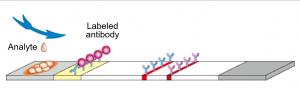Many of you must have heard of this famous book’s title, but few of you know what the idea behind this book is. The reason I brought this somewhat hard topic to you is that the basic concept the author, Jared Diamond, wants to tell you is that the disparity of the development between civilizations are related to geographic luck. Since this book is very long, I will explain a few major points that can help you catch a glimpse of what the title means and how it is related to luck.
The prologue starts with Diamond’s conversation with his New Guinean politician friend Yali. Yali asks him why there’s any difference between his people and the Europeans, who dominated their land for more than 200 years, as there were no genetic differences. The reasons will be presented below.
In Part 2 and 3 of the book, Diamond explains how Spanish conquistadors of 168 soldiers could defeat 80,000 Incan armies. The Incans, followed by their king Atahualpa, welcomed Francisco Pizarro and his army, not knowing that they came to conquer their empire. The Incans heard gunshots for the first time in their lives, and Spanish soldiers began to slaughter them with sharp knives. A passage in the book explains this one-sided battle as, "If the night had not come on, few out of more than 40,000 Incan troops would have been left alive.” But that was just one battle. The most critical factor of winning the entire war between the Spanish soldiers and the Incans were the germs that came from Europe. Endemic germs such as smallpox, measles, and typhoid wiped out 95 percent of the Incans.
Then for what reason could the Europeans possess ‘Guns’ and ‘Steel’ while Incans couldn’t? And how come the ‘Germs’ destroyed one civilization completely?
The primary reason the European culture could develop more than the Incans was agriculture. Diamond emphasizes the positive sides of agriculture as farming precipitated population growth, which entailed the division of labor. Focusing only on their part in the workforce, experts appeared, and different written language began to be invented. As the database of ancestors’ trial and error accumulated, they could make weapons including guns. This was not the end. Agriculture brought domestication of wild animals of which some people became victims of the pathogenic bacteria carried by animals. When germ-carriers with tolerance to such diseases physically contacted with nontolerant people+(like Incans in this chapter), epidemics spread out, quickly killing the infected.
The author suggests even though the Africans or South Americans did farming as well as Europeans, environmental dissimilarity, not physical, intellectual, or genetic factors, made the Europeans’ farming culture spread easily. As you can see from the world map of the continents, African and American continents are vertically long while Eurasia is horizontally long. Since the same latitude means similar climate, soil, and vegetation, crops can be transported, and grown easily across the continent.
The author’s opinion is that Europeans’ success in the expansion of farming was due to their geographical advantages. But there is some opposing criticism to Diamond’s opinion from many scholars. The most prominent one is Diamond’s underestimation of human agency. Critics point out the deterministic nature of the book, arguing that Diamond made it seem as though certain civilizations were destined or predetermined to succeed or fail, solely based on geography. The complicated transition of political structures throughout history, the impact of inventions, and other factors related to human ability were not considerations in Diamond's book. Also, he put ‘development’ as a criterion to assess and line up different cultures which can be regarded as the enforcement of the Eurocentric perspective.
Regardless of what the critics say, there’s lots of factual information here that needs to be considered when looking at the differences of the civilizations, and this is why I recommend this book to you.
Endemic: especially of a disease or a condition, regularly found and very common among a particular group or in a particular area
Pathogenic: able to cause disease
Song Hojae x
<저작권자 © 홍익대영자신문사, 무단 전재 및 재배포 금지>





